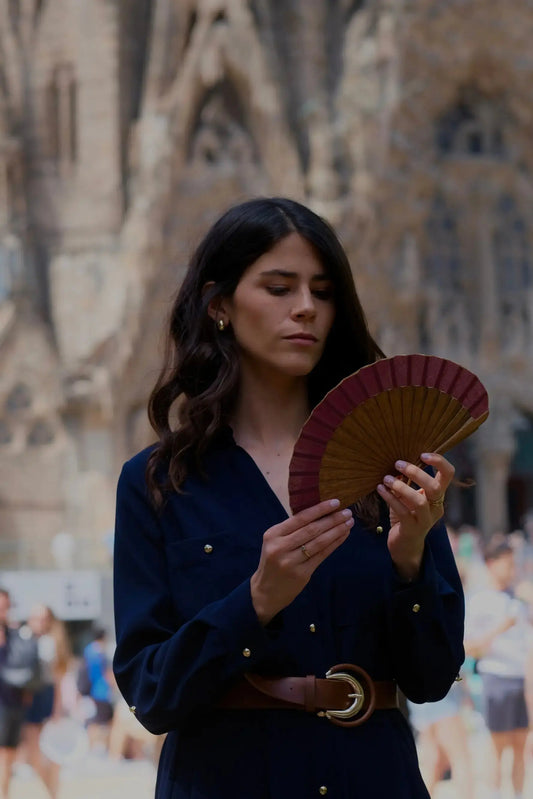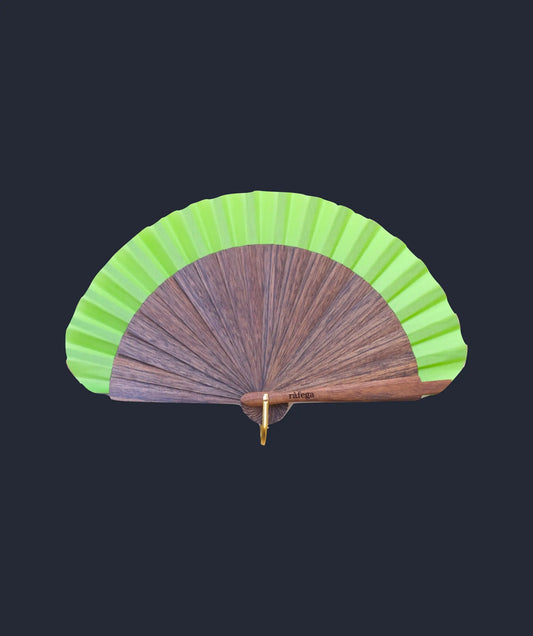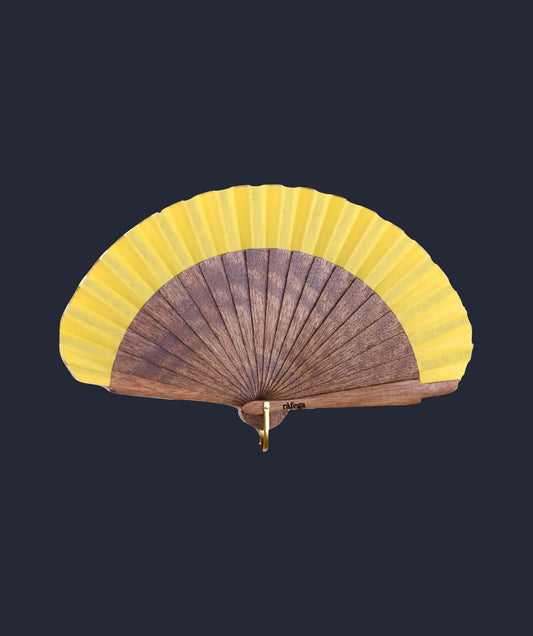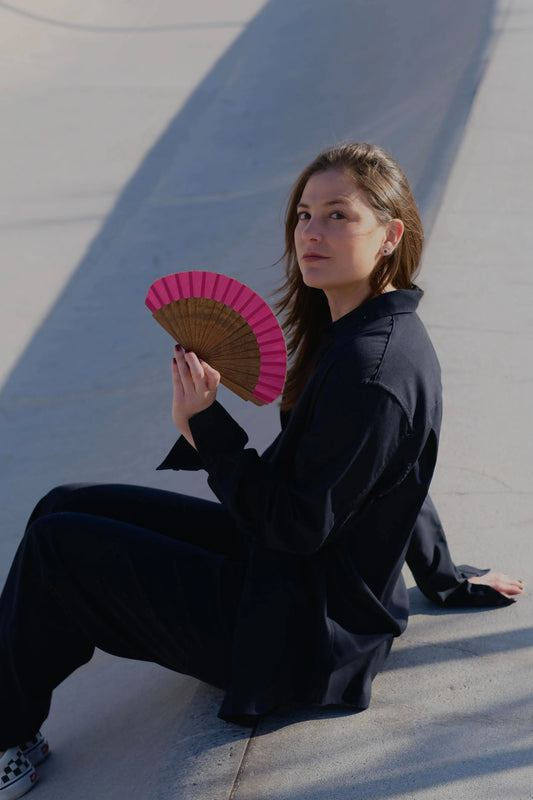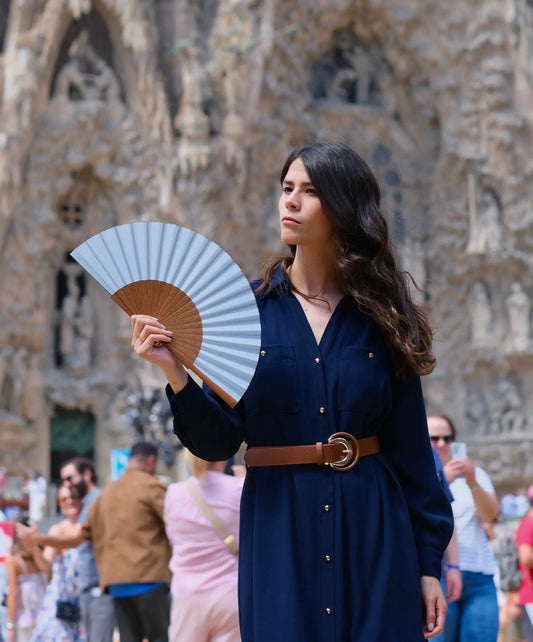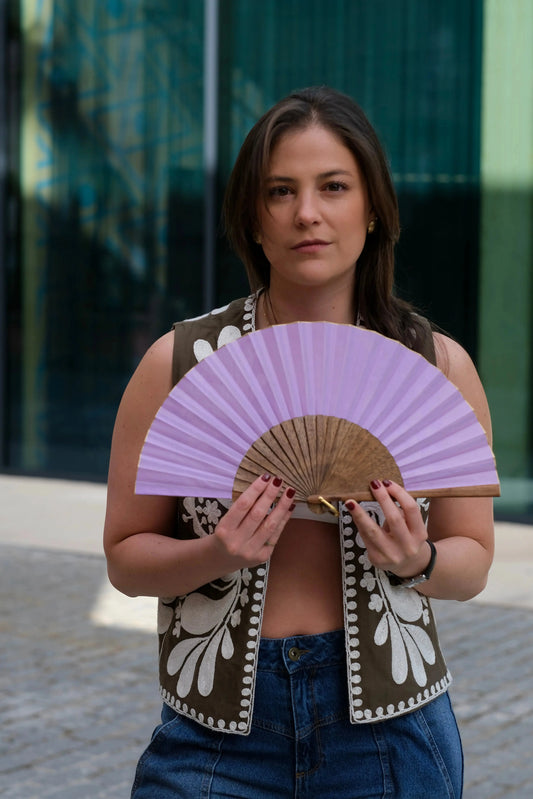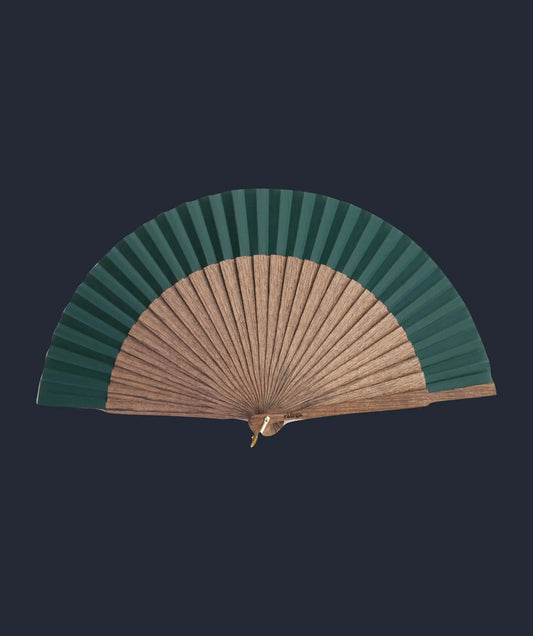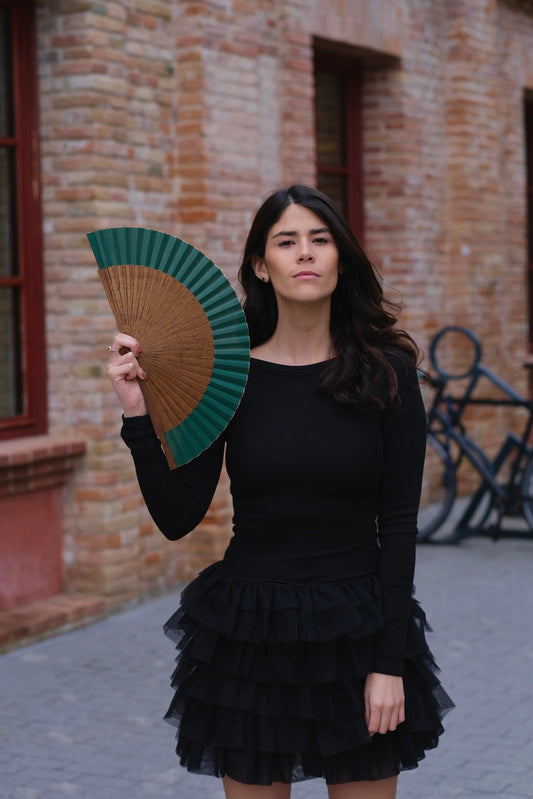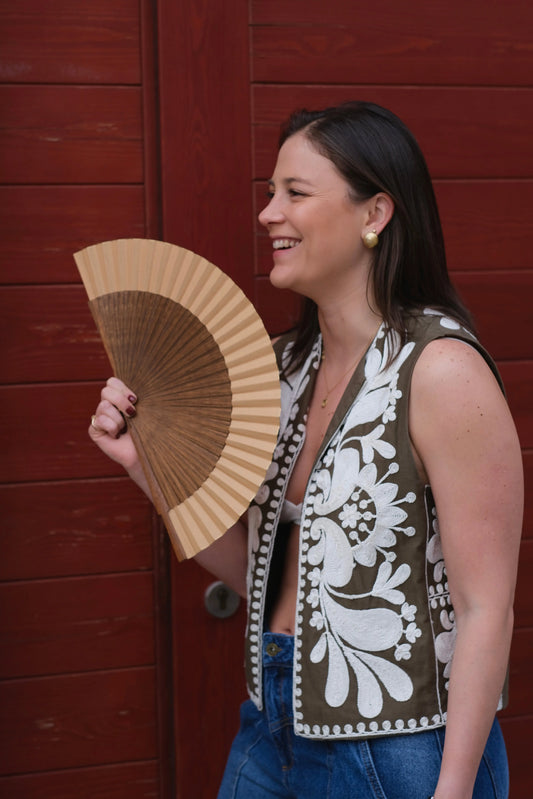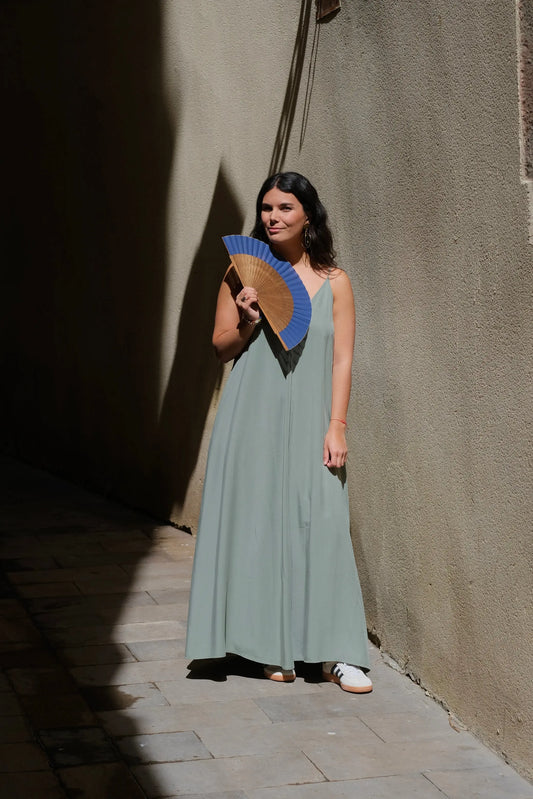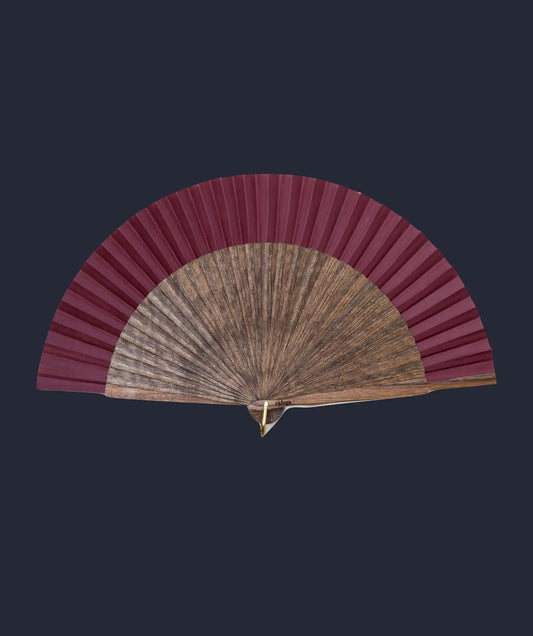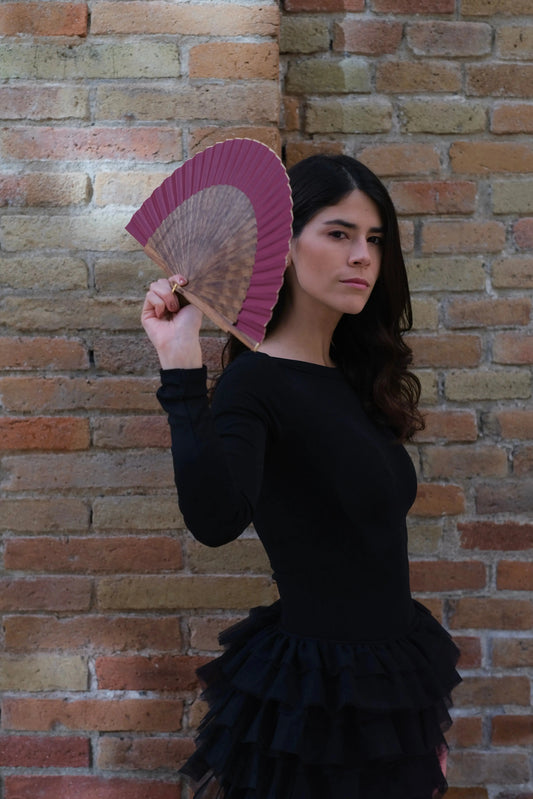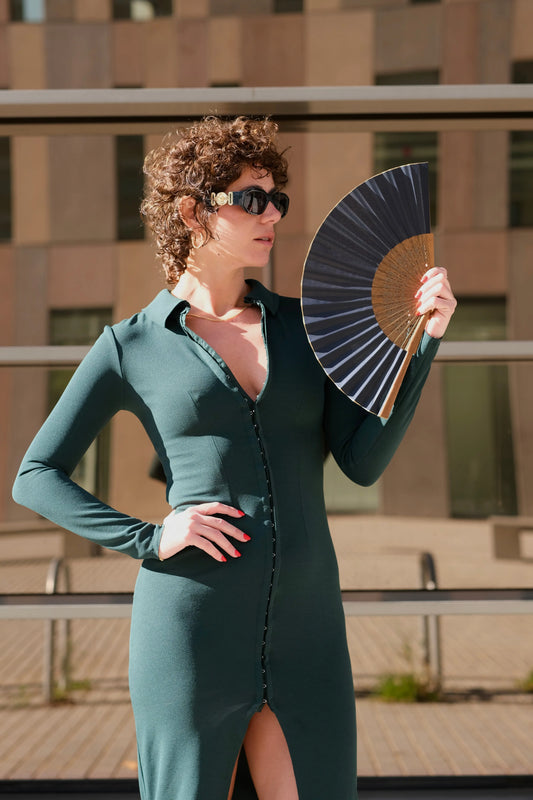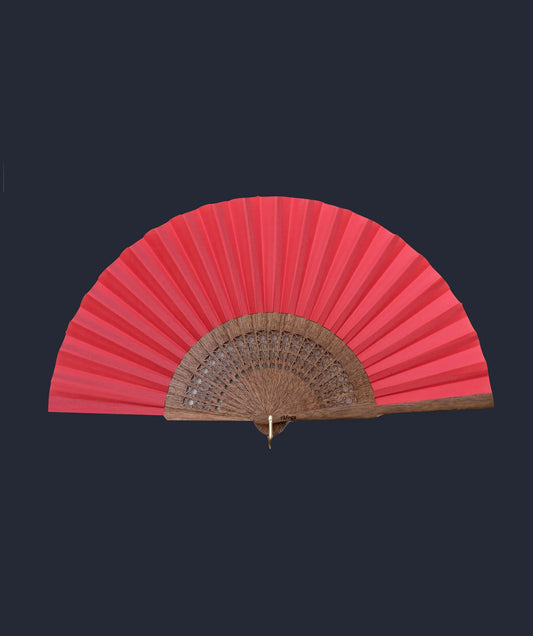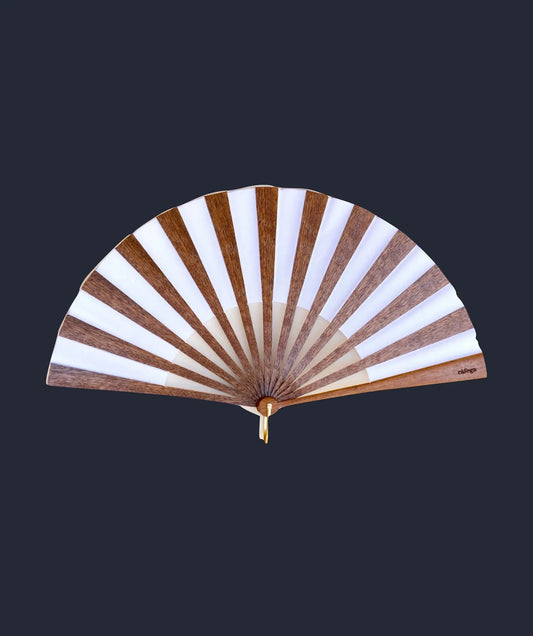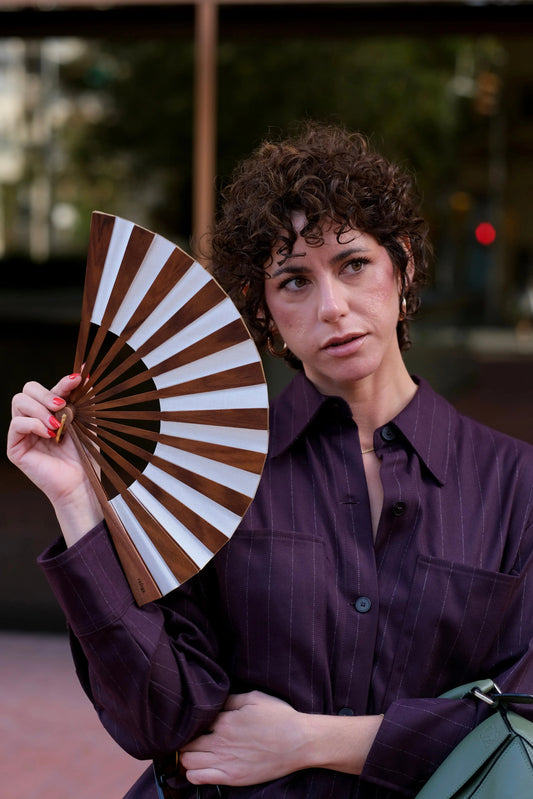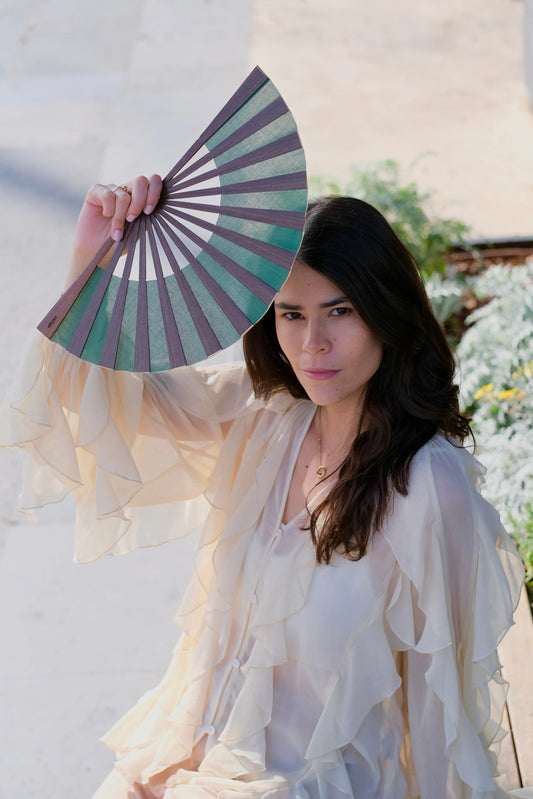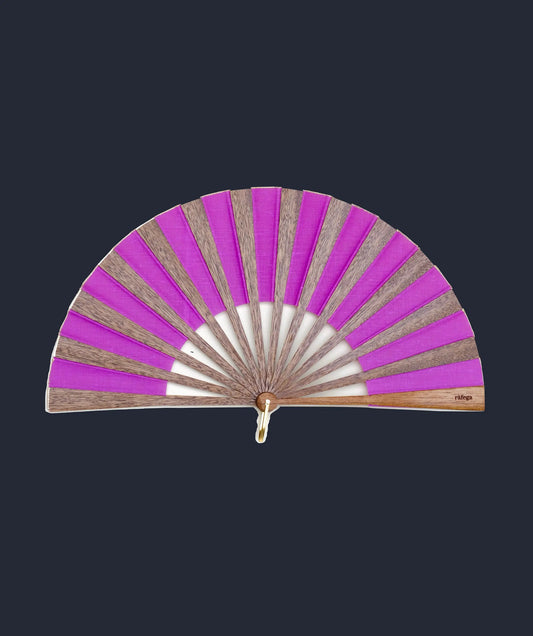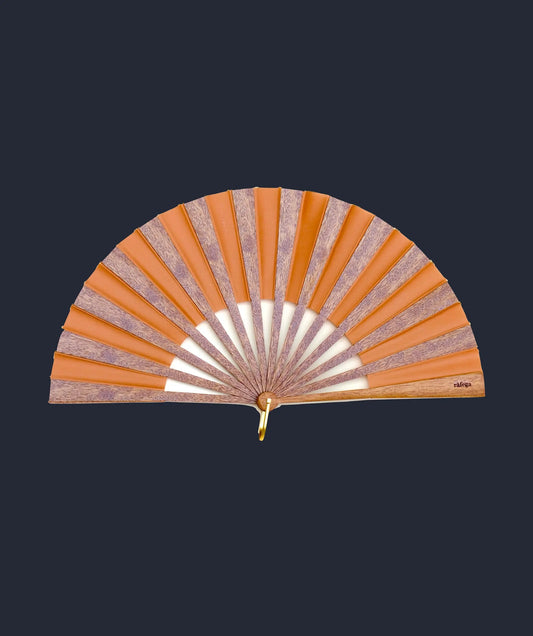One of the growing trends in the fan industry is painting workshops. Although we don't offer these types of workshops at Ràfega, we do offer fans where you can draw your artwork, and we can give you some tips if you're thinking of painting your fan yourself.
While the entire fan can be painted (see article: The Parts of a Fan), we recommend that, if you don't have much experience, you focus on decorating the country, which serves as the protective membrane that covers the ribs. Typically, the country is where many cultures have displayed their creativity through paintings and prints.
For ràfega fans, we use 100% cotton fabric, which has high absorption capacity and durability, making it an ideal material for painting. Now, we'll show you step by step how to paint a fan.
Materials:
- ràfega fan (the Havana fan can be a good fit because it's ivory, like a canvas)
- Pencil (for the sketch)
- Paints (acrylic, tempera, watercolor, depending on the fan's material)
- Fine paintbrushes
- Palette for mixing colors
- Container of water and a rag
- Varnish (optional, to protect the paint)
Step by Step:
1. Clean and prepare: Make sure the fan is clean and dry. If it's new and varnished, you can lightly sand it to help the paint adhere better.
2. Preliminary design (optional, but recommended): Although some people are talented at painting on a blank canvas, if you want a more elaborate design, we suggest first sketching your design on paper and then using a pencil to draw it on the fan fabric. If the fabric is dark, remember to use a white pencil. Be creative: you can draw flowers, landscapes, and even phrases.
3. To paint the fabric fans: Use acrylic or special fabric paints. Don't use too much water to prevent the paint from spreading. Paint carefully using fine brushes and work from the inside out if using concentric or floral designs.
4. Add some details: Add fine details with a fine brush or acrylic paint markers. We recommend using gold, silver, or metallic colors for a more elegant touch (ràfega always does this on the border of her country).
5. Varnish: It's not mandatory, but it's recommended that once the paint is dry, you apply a clear varnish (spray or brush) if you want to protect the design. Make sure it's suitable for the surface.
We hope this step-by-step guide has been helpful. If you'd like to share your results, feel free to tag us on our social media!



